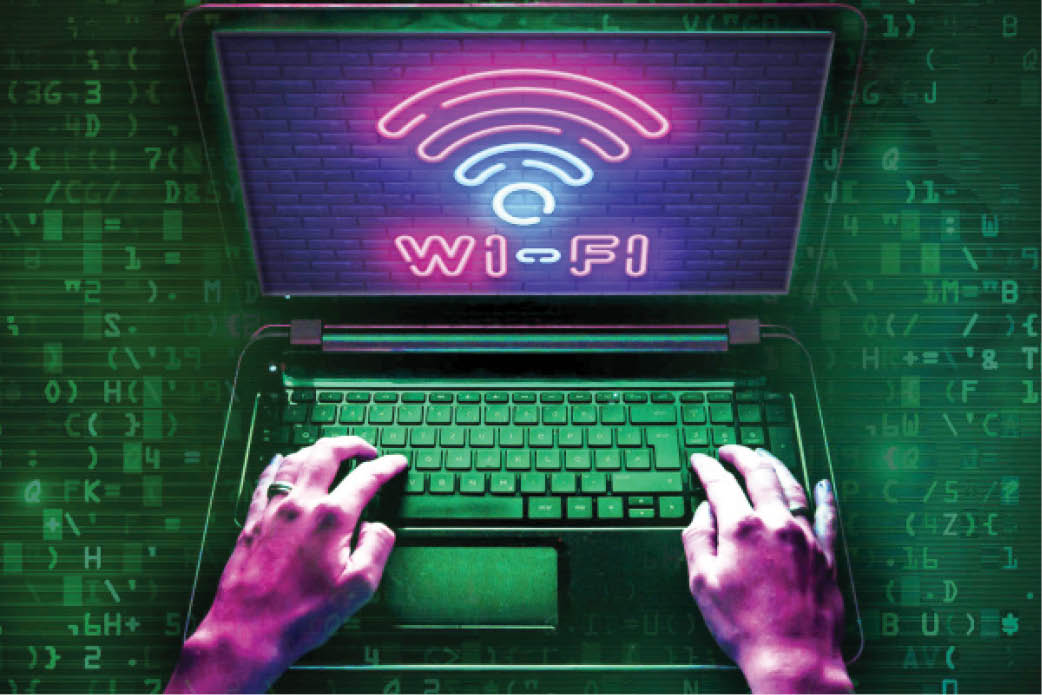Technology has transformed security agencies’ work in the 21st century. There are now plenty of new tools on the market that can help law enforcement agents catch criminals. These tech tool include GPS tracking, facial recognition software, and biometrics and so on. In the near future, IT experts said criminals would find it difficult to hide their crimes and themselves.
- GPS Trackings
Although GPS tracking has been used since the late 1980s, we didn’t have much use for it until the invention of the smartphone. Since most smartphones are made with a built-in GPS, they can be used to locate a person, even when the app is turned off on the device.
Law enforcement officers could also place a GPS tracker on the criminal’s car if the suspect uses a burner phone. In some cases, a traditional tracking device may be used to gain information on the suspect’s accomplices or dealers they otherwise couldn’t get from a phone-based GPS.
I had sleepless nights before S/Court judgement — Bauchi Gov
Stakeholders urge Bauchi Govt to invest in para sports
- Facial/Voice Recognition Software
Facial and voice recognition technology is considered controversial because it could easily be used unethically. But when used responsibly, facial and voice software can be an effective investigative tool that can help find suspects and victims without relying on human memory.
Although voice technology is mainly used to command vehicle or phone functions, it can also help law enforcement match a person’s voice to a name, address, and phone number. This tech could be helpful if the criminal is a drug dealer or scam artist who’s rarely seen in public.
- Artificial Intelligence
Artificial intelligence (AI) is gaining popularity and will used widely in the next ten years. As an expansion of the Internet of Things (IoT), AI is beneficial for reducing time spent on time-consuming or tedious tasks. Facial and voice recognition software is an example of how AI will be used in the future.
- Enhanced Body-Worn Cameras
The police and other law enforcement agents can record interactions with the public with body worn cameras. Body-worn cameras will continue to improve by becoming smaller, less cumbersome, and more durable. These cameras will include a synchronized video feed that connects to the patrol car, thermal imaging to see humans and animals, and facial recognition capabilities.
- Biometrics and DNA Technology
It’s hard to express how important DNA technology has been to law enforcement, thanks to a database called the Next Generation Identification system. The criminal justice community can look up biometrics (voice, palm prints, iris, gait, and vein recognition) and criminal history. With these databases, you can look up potential suspects in seconds.
- Eyes on Innovation – Technology Digital Forensic Software
This type of software is used to find, recover and preserve digital evidence that’s often associated with electronic crimes, such as credit card fraud or child pornography. But many non-electronic crimes also include digital evidence, such as bank account information, phone numbers, emails, text messages and social media posts.
Digital forensic software has special capabilities, such as identifying and recovering hidden (or deleted files), performing complicated searches and determining the contents of a file beyond the file extension (.doc, .pdf, etc.).
7.Information Sharing Technology
Communication among law enforcement agencies has always been a challenge, but certain types of technology are helping to bridge the gap so that everyone is on the same page. One of such technologies is OpenFox® information sharing products and programs.
- Virtual Reality Training
Virtual reality (VR) training for law enforcement agents provides a safe, immersive experience that simulates real-life behavior and scenarios as much as possible. It also demonstrates to potential officers that a department or agency is serious about the latest innovations and educational tools, which can help with recruiting.
VR training is now being used for new recruits in the Pulaski County Sheriff’s Office in Arkansas, United States. The flexibility of the system allows officers to vary scenarios and settings to include shopping malls, neighborhoods and schools. At the Tequesta Police Department in Florida, officers use VR tools to practice responding to hostage and active shooter situations and help individuals in mental distress. This can be used to take kidnap victims from their abductors holding them hostage.
- eCitations and Mobile Printers
Advances in technology now make it possible for law enforcement officers to issue citations without spending precious minutes filling out paperwork by hand. Here’s how the process works: The officer uses a device to scan the barcode on the driver’s license. The information populates a citation, which the officer prints using a mobile printer. The officer can also send the citation to the courthouse digitally, all of which saves time, increases efficiency and reduces errors.
In one successful example, the police department in Olathe, Kansas switched to this technology, decreasing the time it takes to issue a citation from 15–20 minutes to 2–3 minutes.
- Video Doorbells
Video doorbells have been installed by thousands of homeowners as a way to enhance home security and give them peace of mind. It turns out, though, that these surveillance systems are also helping law enforcement when it comes to criminal investigations. In 2020 alone, law enforcement agencies across the U.S. made more than 20,000 requests last year for footage captured by Ring video doorbells and other home-security cameras. Amazon — which owns Ring — has entered into more than 2,000 cooperative agreements with law enforcement agencies, which allows them to automatically ask camera owners for their security footage if they live near a crime scene.
- ShotSpotter
“Shots fired!” is not an uncommon dispatch from witnesses or officers on patrol, but pinpointing the exact location of the gunfire takes up precious time when every moment counts. Today, more and more US cities are implementing ShotSpotter technology that uses sensors to detect gunfire and analysts to track the data and instantly relay it to police, enabling them to arrive on the scene more quickly than ever before.
Named for the leading provider of this technology — California-based ShotSpotter — the service can cost $40,000 to $60,000 per square mile per year for cities to cover high-crime areas.
The company claims it can “detect 90%+ of gunfire incidents with a precise location in less than 60 seconds to significantly improve response times.”
A dramatic example of ShotSpotter in action took place in 2017 in Fresno, Calif., where police used it to apprehend a criminal on a killing spree. The technology enabled police to trace the killer’s movements and apprehend him in 4 minutes and 13 seconds.
12.Thermal Imaging
Thermal imaging has become an important law enforcement agency technology tool that is especially helpful in dark conditions. Thermal image cameras, some available as small hand-held units, utilize infrared imaging to detect heat emitted by such objects as humans and animals, and to deliver a “heat picture” or “heat map” of the environment in question.
As seen on any number of TV crime shows, it can be used to track the motion of suspects in a darkened building. Such technology has life-saving applications — from firefighting to search and rescue missions (for example, finding a lost child or senior citizen in a blinding snowstorm).
- Drones
Also called unmanned aerial vehicles (UAVs), drones are increasingly being used by security agencies to gain aerial vantage points for crime scene work, search and rescue efforts, accident reconstruction, crowd monitoring and more. Some of the more sophisticated models can be equipped with thermal imaging or 3D mapping software to offer GPS-enhanced precision to the areas being surveyed.
Many drones and UAVs are also equipped with zoom cameras, making them incredibly valuable for delivering actionable, real-time intel in high-risk, “armed and dangerous” situations.
An IT expert, Martin Nwoga, who spoke with our reporter said the federal government should also allow telcos use Lawful Interception Management System (LIMS) so that they could monitor and track criminals and supply same to private security companies to act upon if police and other law enforcement agencies fail to do so.
LIMS is a modern monitoring solution for fixed and data networks. It is helpful for telecommunication providers and ISPs to fulfill their legal obligation to intercept phone calls plus data, and to ensure privacy as much as possible.
Targeted monitoring of public communication services such as telephone calls, mobile data and Internet-based services such as e-mail, voice-over-IP, instant messaging, etc. becomes possible with LIMS.
The system acts as a link between the provider’s network and the law enforcement monitoring centers. The strict security measures prevent unauthorized access, secure all private user information, and relieve security checks through comprehensive logging.
Nwoga said “if a semi-state agency could be set up to legally monitor devices and communications of suspected criminals, this would go a long way in solving crime”.

 Join Daily Trust WhatsApp Community For Quick Access To News and Happenings Around You.
Join Daily Trust WhatsApp Community For Quick Access To News and Happenings Around You.


